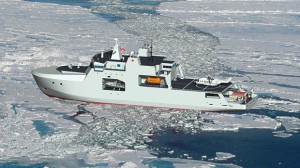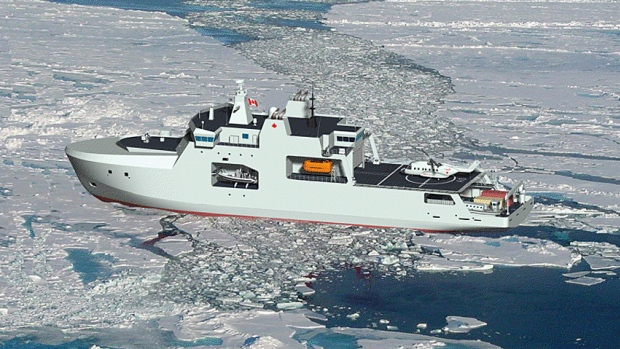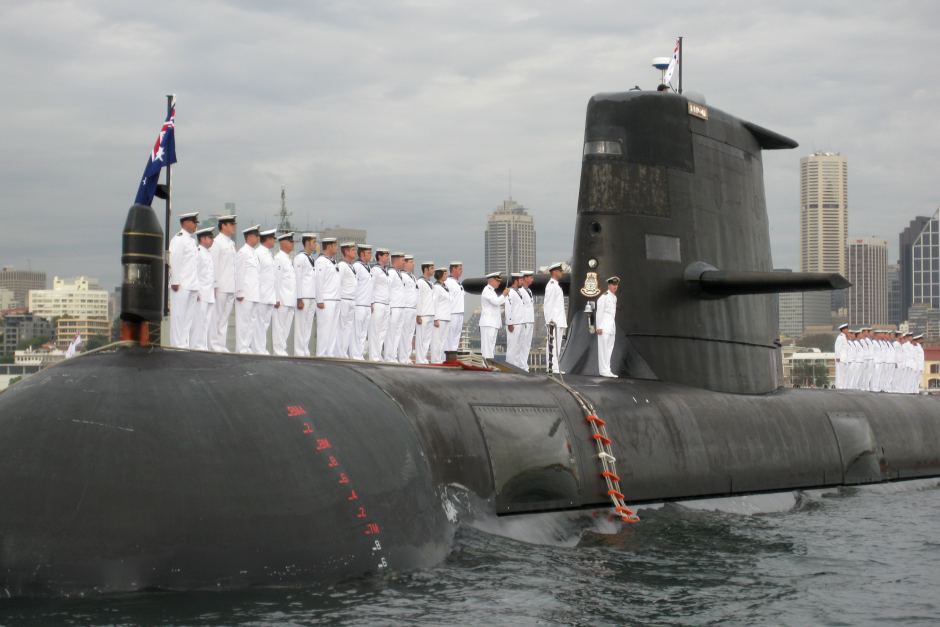In order to modernize the Royal Canadian Navy, the Canadian government unveiled its National Shipbuilding Procurement Strategy (NSPS) to the public in October 2011. Since then, the exact capabilities of Canada’s future maritime forces have been largely a mystery. It is clear that the recently troubled Protecteur-class joint support ships will be replaced by the Queenston-class, based on ThyssenKrupp Marine System’s design of the Berlin-class auxiliary vessel for the German Navy. But the NSPS also calls for the addition of new combat vessels, including eight Arctic Offshore Patrol Ships (AOPS) and fifteen Single Class Surface Combatants (SCSC). Although the details of work on the latter design remain closely guarded, some information on the AOPS has made its way into the public domain in 2014.
In September 2014, Prime Minister Stephen Harper announced that the first AOPS to be operated by the Royal Canadian Navy shall be known as HMCS Harry DeWolf, a decorated Canadian hero of the Second World War. Aside from knowing the name of this new class of vessels, it has become clear that the ships will be designed jointly by BMT Fleet Technology and STX Canada Marine. These two companies were also asked to produce technical specifications in 2008 for the  formal Request for Proposals. Clearly, the Canadian government is committed to engaging BMT Fleet Technology and STX Canada Marine at every stage of the process in producing this new class of vessels.
formal Request for Proposals. Clearly, the Canadian government is committed to engaging BMT Fleet Technology and STX Canada Marine at every stage of the process in producing this new class of vessels.
It is difficult to determine, however, what the exact capabilities of the Harry DeWolf-class will be. The BMT Group has been involved in the design of Britain’s Future Aircraft Carrier project. That involvement resulted in the Queen Elizabeth-class aircraft carrier, the first of which is expected to enter service in 2017 to be joined by a second of the same class in 2020. The carriers were sufficiently impressive that the French Navy intended to acquire a similar design until France’s 2013 White Paper on Defence and Security nixed the idea of obtaining new aircraft carriers. But there is little about the design of the Queen Elizabeth-class that could inform observers about the capabilities of the Harry DeWolf-class. Britain’s new aircraft carriers will have a displacement of more than 70,600 tonnes, whereas Norway’s Svalbard-class offshore patrol vessels that have been held up as possible inspiration for the Harry DeWolf-class have a displacement of 6,375 tonnes. This will be an entirely different scale of project for BMT.
However, there may be further delays to the completion of this new Arctic fleet. Irving Shipbuilding, which is responsible for managing the AOPS project, reported in September 2014 that the design phase was on schedule and approximately $20-30 million under budget. But bad news followed in December 2014 when it was learned that the final cost of construction of the vessels based on BMT Fleet Technology design would require more funding than had been budgeted by the Canadian government. The projected cost of construction had been $3.1 billion with an additional $1.3 billion to cover maintenance over the 25 year lifespan of the vessels. The estimated cost per unit of the Harry DeWolf-class is almost $350 million, which already exceeds the $100 million per offshore patrol vessel paid by Norway as well as the $105 million per vessel paid by Denmark and the $125 million surrendered by Ireland for each of its own vessels. Depending on the final cost estimate, there will likely be considerable controversy in Canada on this issue. This will in turn draw out the construction of the Harry DeWolf-class.
Questions remain over the total number of ships to be completed and whether the first will be ready for service in 2018. Meanwhile, Denmark has become increasingly aggressive in its territorial claims in the Arctic, even laying claim to the North Pole through Greenland’s continental shelf. Although such a dispute should be resolved through the exchange of scientific data, it is worrying that Canada may be unable to assert its sovereignty fully in the Arctic until the end of the decade.




